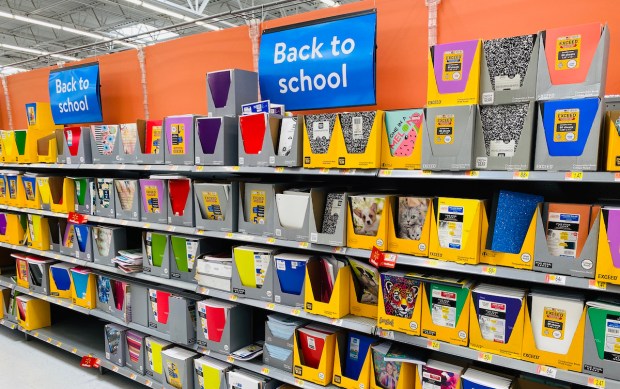Walmart Goes Back in Time With Back-to-School Prices

Walmart is letting parents shop for the 2023 school year at 2022 prices.
“With 80% of customers expecting to spend more on supplies this year, …we’re excited to offer the school supply basket at the same prices as last year,” the retailer said in a news release last week.
That means customers can buy the most popular items on this year’s school supply lists — like a 24-count box of Crayola crayons or composition notebooks — for less than $13, according to the release.
The 80% figure Walmart mentioned comes from the National Retail Federation. It also follows findings released last month by commercial real estate/investment management firm JLL, showing that parents are projected to up their spending on back-to-school supplies by 15.7% compared to last year’s numbers.
“After moderating spending plans last year, parents have a different approach this year — spending more per child despite inflation concerns,” Naveen Jaggi, JLL’s president of retail advisory services, said at the time. “Our survey shows parents are investing in back-to-school essentials, and this is not only supporting their children’s educational journey, but also playing a crucial part in driving consumer spending.”
The JLL survey showed that 55.2% of parents expected to budget more to cope with higher prices for the same number of goods purchased last year. Parents will still seek out deals, with the increased spending suggesting consumer resilience despite inflation.
In addition, the survey found that just under 70% of parents will try to find bargains when they shop. And 24.1% of parents valued free shipping over cost when choosing where to buy online.
Meanwhile, Walmart continues to be the go-to place for cost-conscious grocery shoppers, PYMNTS research found.
Twenty-five percent of consumers made their last purchases online and had items delivered, with the rest involving a physical store.
“Part of Walmart’s brick-and-mortar go-to appeal is its strong grocery sales, representing 19% of the retailer’s total transactions,” PYMNTS wrote in June. “These sales are vital to the megaretailer’s 7.4% slice of overall U.S. consumer retail spend. Walmart maintains its share by reportedly absorbing inflation-influenced price hikes instead of passing increases onto customers to maintain loyalty.”
For all PYMNTS retail coverage, subscribe to the daily Retail Newsletter.

